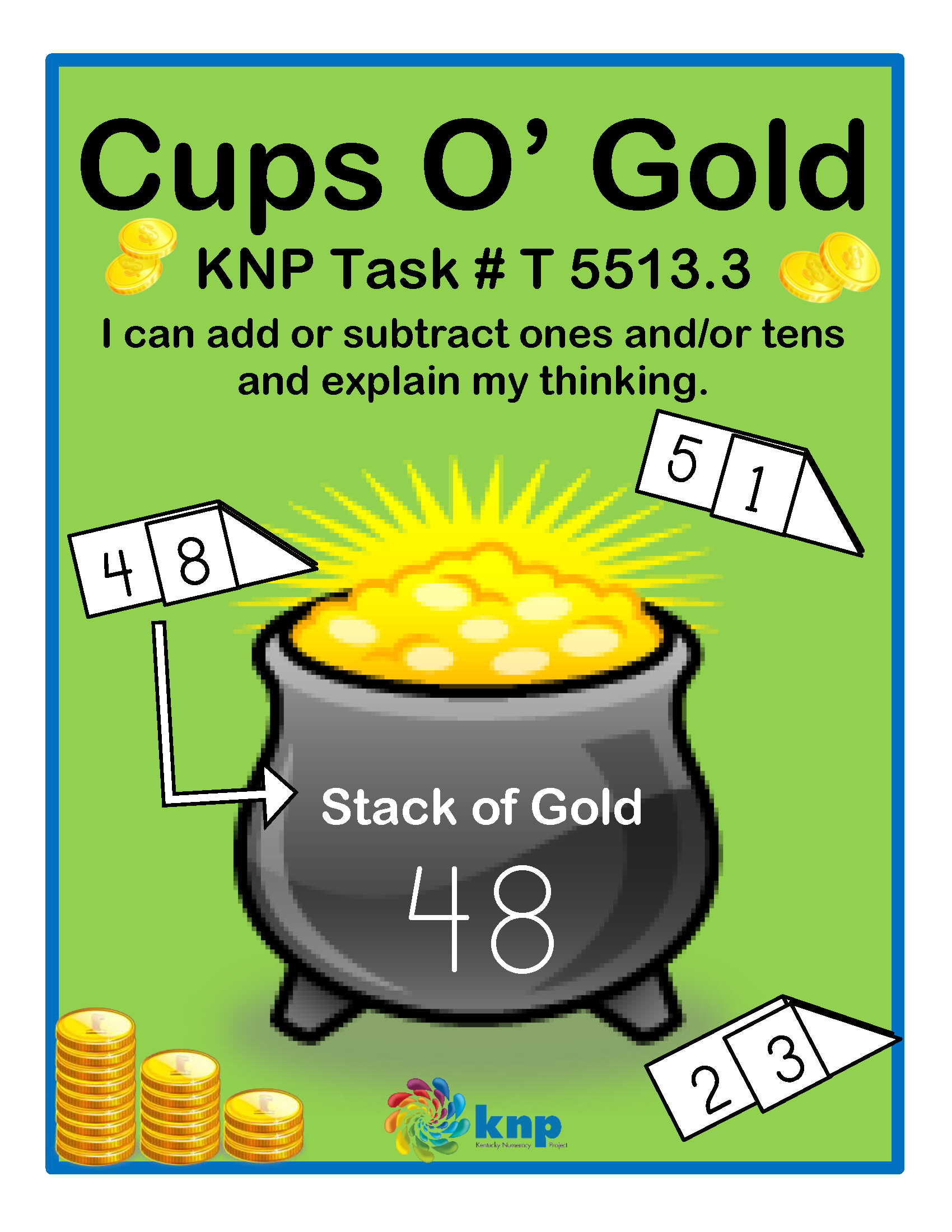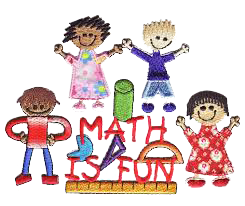“Cups O’ Gold”
KNPIG ID #T 5513.3
What's this activity about?
This activity is a fun way to practice using what they know about place value to add and subtract numbers up to 100. You need two players and both will create a “stash” of gold with arrow cards. Your child will start by creating a “stash” of gold by selecting two arrow cards. As the game continues, the players will try to get the other player’s stash by subtracting amounts from the other “stash” and adding it to their own. The winner is the player with the biggest Cup O’ Gold.
What materials do we need?
Printable arrow cards (ones and tens)
Writing tools and paper or whiteboard

How do we play?
1. Player one will select a 2-digit and a 1-digit arrow card and write that number as the amount in his/her “stash of gold.”
2. Player two will select a 1-digit arrow card and ask player 1 to subtract that number from their “stash of gold” (writing their new amount) and “give” that amount to player 2. Player 2 will write the 1-digit number as the amount in his/her “stash.”
3. Repeat with player two choosing a 2-digit and a 1-digit arrow card and player one choosing a 1-digit arrow card for the amount of gold to get from player 2.
4. Each player should write the amount they had from round 1 and from round 2, find the total and explain how they found the total. The winner will be the player with the greater number of pieces of gold. Write a comparison using the symbols > (greater than), = (equal to), or <(less than).
Where’s the Math?
There is a lot of math in this activity that relates to what your child is doing in school. Third graders are becoming experts at adding and subtracting numbers between 1 and 100 using mental math. They are practicing mental math strategies such as breaking apart groups of ten in order to figure out more difficult sums and differences. Using place value cards such as the printable arrow cards provided with this game can help them imagine the gold pieces as quantities. Students will also be comparing values. When they record the results after two rounds, they will us comparison symbols, > or < in order to figure out who won the game. Knowing the meanings of the quantities in their place values is important when comparing. They will understand that a 3 in the ten place value is not the same as a 3 in the ones place value.
Things to Think About:
When working with your child during this activity remember to BE PATIENT. Children need time to work through problems using mental math. Let them make mistakes and try to figure out what they did wrong. This will make them better problem solvers.
Make sure you talk about place value and how the digits in the different place values have different quantities. You may ask how the written numbers in their stash may look using the place value arrow cards and vice versa. Help them take apart the number by separating the arrow cards and then putting them back together. The quantities haven’t changed and it’s helpful for kids to see that. Prompt them to regroup tens in order to subtract larger digits from smaller one and to add digits that end up having sums larger than ten.
You can provide materials to work with for children who are not yet ready to use mental math for the addition and subtraction work. You can further simplify the game by giving the larger one- digit cards to the first player and lower 1-digit card to the second player, so there is no need to break apart groups of ten to subtract. This will also help the child become comfortable with the gameplay, so the more difficult math can be added later on.
Feedback
Send us your thoughts and ideas about these activities. Email the KCM

